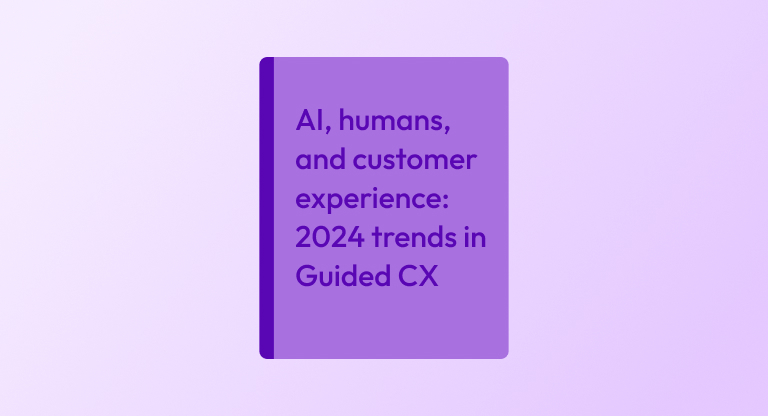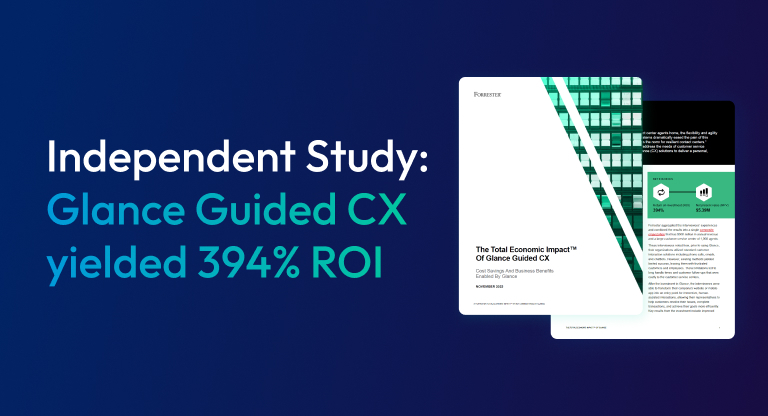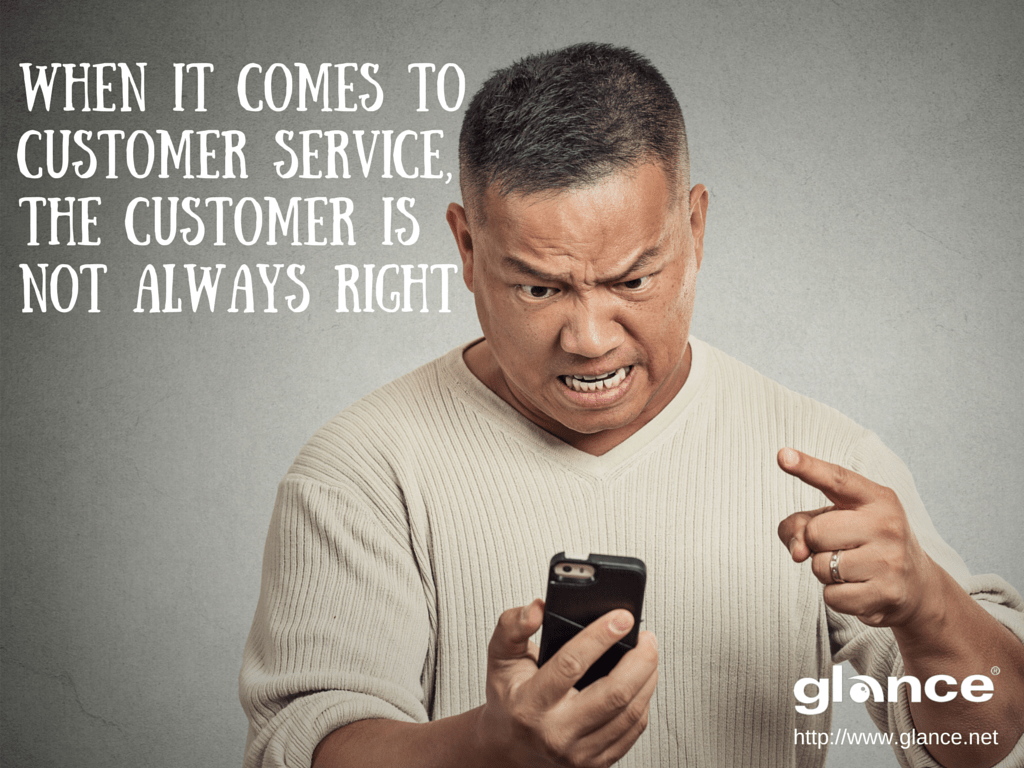The terms “customer service” and “customer experience” are sometimes used interchangeably. While they’re connected, they’re not the same, and it’s important to understand the differences and how each can help propel your business forward.
Keep reading to learn the important distinctions between the two, how they relate, and why both are important to your business’ success.
What is customer service?
Customer service is the assistance and support you offer your customers before, during, and after their purchase of your product or service. Customer service can be offered in person, or via phone, online chat, email, text message, and social media. Many companies also offer self-service support.
Customer service has become increasingly important. Customers today expect top-notch customer service, and if their expectations are not met, they’re likely to leave for a competitor. About half of customers say they would switch to a new brand after just one bad customer service experience.
Good customer service has the power to:
- Improve customer retention: 93% of customers are likely to make repeat purchases with companies who offer excellent customer service
- Improve brand reputation
- Increase referrals
Customer service is a vital component of the customer experience — and it’s a key differentiator for brands — but it’s just one piece of the pie.
What is customer experience?
Customer experience, or CX, is more broad than customer service. The customer experience is the entire customer journey — the sum of every touchpoint between the customer and the brand. It measures how customers feel about your brand; their emotional, physical, and psychological connection.
This includes customer service, but also includes how the customer feels when they walk in to your business, interact with your website, or use your product or service. When they see one of your advertisements, walk by your storefront, and pay their bill … all these little moments add up to make up the customer experience.
A positive end-to-end customer experience is important to:
- Improve customer retention
- Build brand loyalty (CX is the most important differentiator in creating brand loyalty)
- Boost lifetime value
- Drive competitive advantage
What is a good customer experience? It’s frictionless. Using your product or service is effortless. Customers can rely on you to be consistent and provide what they need, when they need it. They have a positive relationship with your brand and trust you to do the right thing. And they’re willing to pay for it: 42% of customers would pay more for a great customer experience.
A spotlight has been put on customer experience, and more companies are prioritizing CX to achieve more loyalty, more revenue, and more success.
The relationship between customer service and customer experience
Customer service can make or break the customer experience
One bad customer service interaction is all it takes for many customers to jump ship.
In fact, they are four times more likely to switch to a competitor if their issue is customer service related rather than price or product related.
When MINDBODY, the world’s leading wellness services online marketplace, began working with Glance to offer a premium support experience to its SaaS customers, it had measurable improvements: higher customer satisfaction, increased customer revenue, and lower churn. But this improvement in customer service also had a positive impact on the customer experience.
“Leveraging Glance visual engagement has improved our overall brand image by improving our support offering,” said MINDBODY Business Relationship Manager KC Duggan. “Where previously we only addressed auditory, kinaesthetic learners, now we’re connecting with visual learners too. Glance helps us increase our customer’s confidence and ability to repeat the solution.”
Read the case study: MINDBODY Uses Glance to Drive Higher Customer Satisfaction, Higher App Adoption →
Customer service is reactive; customer experience is proactive
Customer service is typically initiated by the customer. When they have a problem, they reach out to the customer service team for help. The customer service team is reactive to the customer’s needs, and helps them troubleshoot and solve issues.
Customer experience, on the other hand, can be proactive. When you anticipate your customer’s needs, you can ensure a more seamless brand experience.
Brands that are both proactive and reactive can build stronger customer relationships. It’s not either/or, it’s both.
Don’t forget about customer success. Customer success teams also contribute to the customer experience. Like CX teams, they take a proactive approach. But like customer service teams, they interact directly with customers. Their role is to understand why customers use a product, and provide guidance and advice to help ensure customer success. This is especially important for subscription-based and SaaS business models.
Customer service is an isolated event; customer experience is ongoing
Customer service interactions are one-off events. They are specific and can be easily measured in metrics like response time and customer satisfaction. These interactions are important, but do not define the entire customer experience.
The customer experience cannot be distilled down to one single event. It’s an ongoing relationship that continues as long as the customer keeps interacting with your brand. There are feedback metrics that are used to gain CX insights, but it’s harder to measure because it’s not easily quantified.
Customer service teams affect customer service, but every team impacts the customer experience
There’s no denying that your customer service team plays a critical role in customer satisfaction. They are the ones interacting directly with the customer. Someone on your product team isn’t likely to impact customer service, but they do contribute to the customer experience.
What does Susan from the product team have to do with the customer experience? Actually, a whole lot. Using the product is a huge part of the customer experience. When Susan makes enhancements or changes to the product, she’s having a large impact on the customer experience, even if she never directly interacts with a customer.
This is why the notion that “customer experience is everyone’s job” is gaining popularity. Because the customer experience is in the hands of every single department and team.
A human, emotional connection is important to both customer service and customer experience
Today’s customers are savvy. They conduct extensive research online and can read right through brands that are inauthentic. While it’s important to automate a lot of business processes, it’s also important to identify key moments for real, human interaction.
Self-help articles can be a great customer service resource, but shouldn’t completely replace one-on-one assistance. Advertisements can be highly effective, but what your employees are tweeting and the ways your company gives back also contribute to your brand image.
Why does it matter? Because emotions are powerful. A Harvard Business Review study found that emotionally connected customers are more likely to recommend brands they care about, less likely to turn to a competitor, and are willing to pay more for a better customer experience.
In today’s digital-first environment, it can be easy to lose sight of the human element, but it’s just as important as ever. Our guided customer experiences leverage technology to create a more personalized and powerful human-to-human connection, right through a customer’s computer screen or device.
Considerations for the digital customer experience
Since the start of the pandemic, the digital customer experience has become paramount. For many brands, it may be the customer experience.
Brands are now challenged to move beyond email and generic websites. Solutions like Guided CX empowers businesses to create a visually engaging experience where customers feel supported and more connected to your brand.
Want to increase KPIs and enhance your digital customer experience? Download our free eBook to develop your approach to Guided CX.
Download the eBook: Drive Measurable Outcomes with Guided CX →





